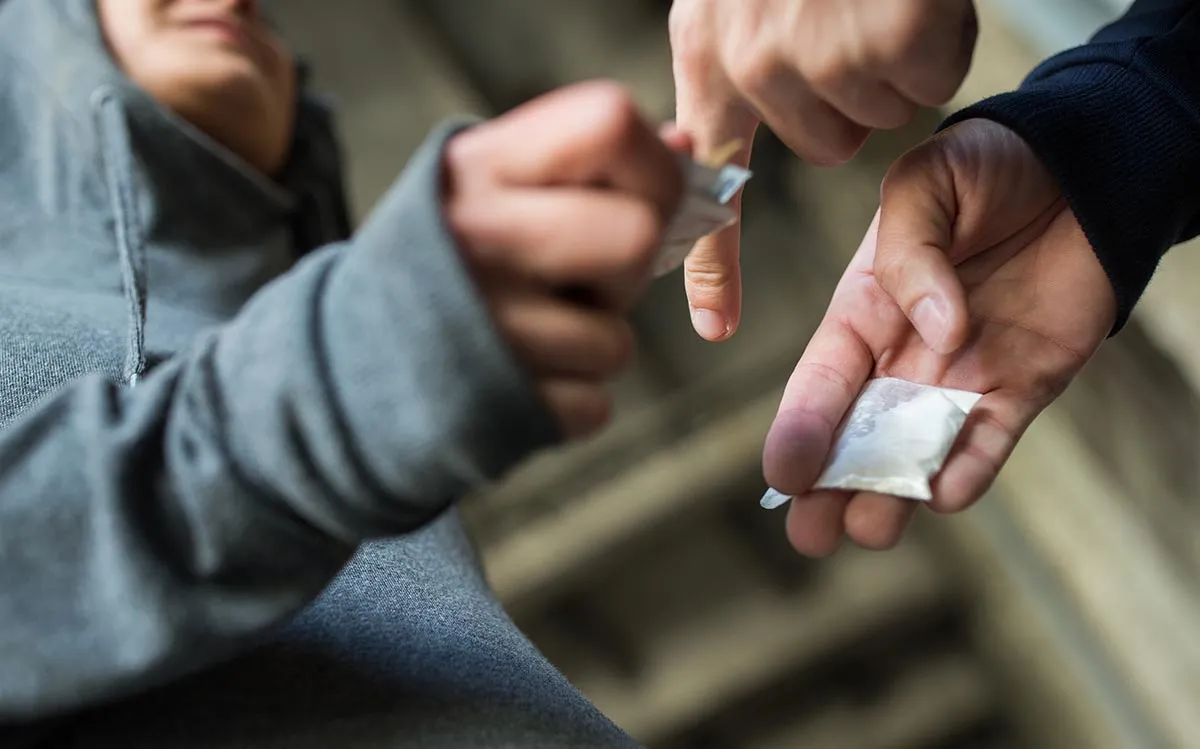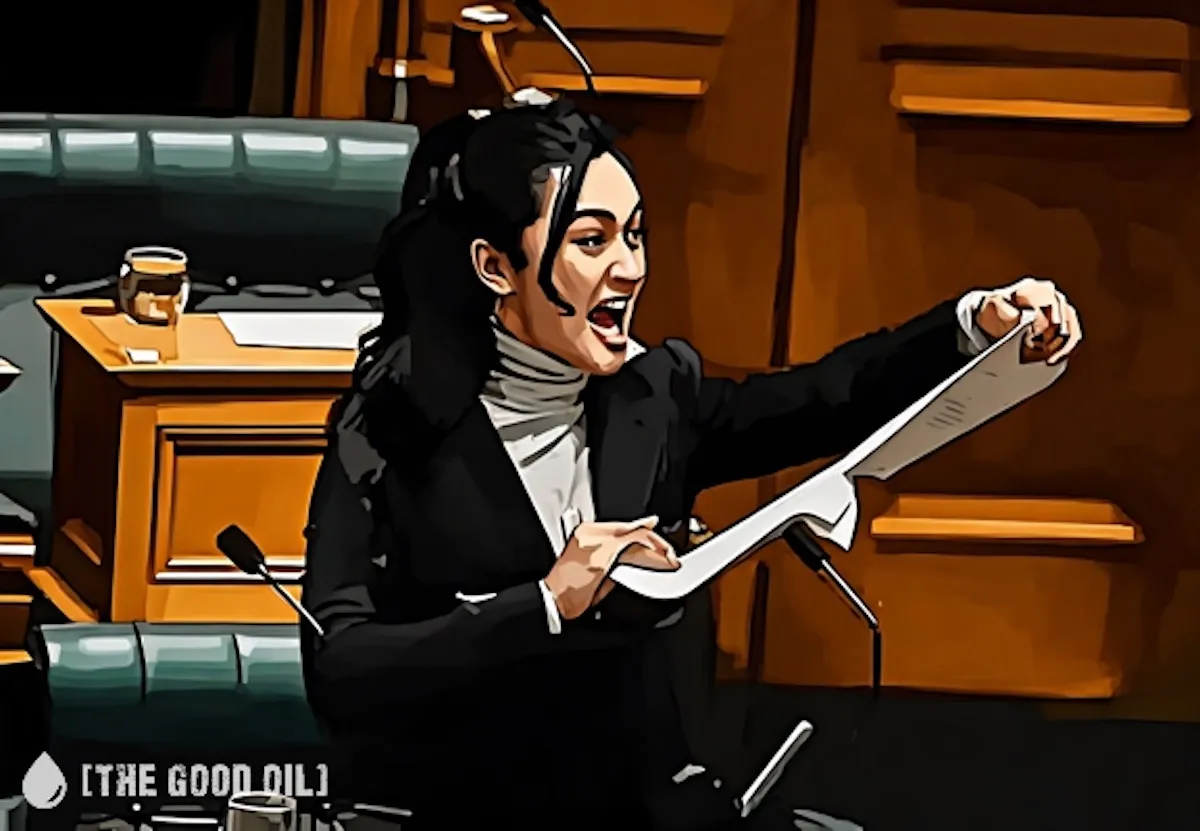Table of Contents
Our media may be ignoring it, but there’s other big news coming from the US that is not the US election. The War on Drugs is coming to an end. In the long term, this news may be of more significance than whether Trump or Biden wins. In Oregon for example, all drugs are now decriminalised and psilocybin is now legal and regulated in therapeutic settings. With regards to decriminalisation, the penalty there for possessing a small number of drugs is now a $100 fine or a health assessment.
In New Jersey, starting Jan 1, weed is now legal. In Arizona, cannabis is set to become legal in early March. And in Washington DC, where cannabis is already legal, psychedelic drugs are now decriminalised.
The War on Drugs is ending, and not before time. If Biden wins it won’t be without a huge sense of irony, as for decades he has been promoting the War on Drugs and has been responsible for some of the worse aspects, including worsening the opioid crisis. Back in May of last year, Zachary Siegel had this to say about the Presidential hopeful:
[Joe Biden] did, however, half-apologize for one thing: His role in creating one of the most insidious aspects of the War on Drugs, even while minimizing his role in it.
“I got stuck with, because I was chairman of the [Senate] Judiciary Committee, writing most of the drug legislation that occurred in [the 1980s and ’90s],” Biden said while speaking at the University of Pennsylvania on April 11 as part of a panel on the opioid crisis. “Big mistake was us buying into the idea that crack cocaine was different than powdered cocaine and having [different] penalties.”
The reality of Biden’s long career as a drug warrior, however, suggests something different: That he didn’t get “stuck with” writing drug legislation; he chose to make it a priority of his 36-year tenure in the Senate. In the War on Drugs, Biden was the “tough on crime” face of the Democratic Party, used his legislative skills to forge a bipartisan consensus for severe anti-drug legislation and specifically wrote or sponsored several laws that public health experts believe have, over the course of the opioid crisis, made it far deadlier than it has to be.
Since the late 1990s, more than 700,000 Americans have died from drug overdoses, and for each of the past four years, more Americans have died from drug overdoses than were killed in the wars in Vietnam and Iraq combined. Unless America drastically changes course, an estimated 500,000 more people are expected to die from an overdose in the next decade. Because of overdose deaths, America’s life expectancy has fallen for the past three years—which, as economists have noted, is unusual for a country that isn’t at war.
[…]At Penn’s Silfen Forum event on opioids last month, sitting onstage one seat away from Biden was Dr. Jeanmarie Perrone, a professor at the university’s medical school with a specialty in emergency medicine and opioid use. She’s seen the opioid crisis’ devastation firsthand—and knows one concrete step the city can take to reduce overdose deaths.
“We have three patients dying a day in Philadelphia,” Perrone said. “We are at a huge crisis and that’s why we need safe-injection facilities, safe house[s], other places where we can get people in.”
Also known as “overdose prevention sites,” safe-injection facilities are locations where people with opioid use disorder can consume drugs under medical supervision in order to avoid fatal overdoses, while helping people with addiction issues find treatment and connecting them to social services. Many public health experts see such facilities as necessary to reduce America’s soaring mortality curve. More than 100 such sites already operate across 10 European countries, as do several now in Canada. Nobody has ever died from an overdose inside one of these facilities. The Rand Corp. recently analyzed the evidence and concluded that the U.S. should pilot them in hard-hit cities, especially where uber-potent illicit fentanyl has taken over the heroin market.
Safe injection sites do save lives, and so do pill testing services, where in most cases when a person is told that the substance they have is not what they think it is will not proceed to use that substance. Also with regards to pill testing, it is often the first time the young person makes contact with someone who has knowledge of the risks associated with the drug the young person is planning to take and is willing to advise them accordingly.
In America, however, they are against federal law, and—although this went unmentioned on the panel—Biden is the reason why.
In Philadelphia, where Penn is located and Biden’s presidential campaign is headquartered, activists and public health workers actually laid the groundwork for what would be the nation’s first overdose prevention site. But earlier this year, federal prosecutors in Pennsylvania filed suit against Safehouse, the nonprofit organization formed to run the location, preemptively acting to prevent the overdose prevention site from opening. To block it, the law they cited was an old provision of the Anti-Drug Abuse Act of 1986, known as the “crack-house statute,” which Biden co-sponsored.
[…]The law makes it illegal to “knowingly open, lease, rent, use or maintain any place, whether permanently or temporarily, for the purpose of manufacturing, distributing or using any controlled substance,” or to “manage or control any place … and knowingly … make available for use, with or without compensation, the place for the purpose of unlawfully … using a controlled substance.”
Far from simply being a relic of the crack era, Biden expanded the statute in the early 2000s by authoring the Reducing Americans’ Vulnerability to Ecstasy, or RAVE Act, in response to fears about the use of MDMA, also known as Ecstasy, at raves. Whereas the crack-house statute originally applied to permanent locations, Biden’s RAVE Act—which was signed into law in 2003 as a section of the PROTECT Act—expanded the provision to allow prosecutors to go after the operators of temporary locations where drugs are used, like the owners of warehouses or fields where music festivals are held.
[…]Throughout the country, as cities look to new approaches to reduce opioid overdose deaths, federal prosecutors are arguing that owners and operators of overdose prevention sites would be in violation of Biden’s crack-house statute. The operators of those facilities would obviously know that drugs are being consumed within its walls—that’s the whole point—and as such, would be criminally liable. Violating the crack-house statute is punishable by hefty fines and imprisonment.
[…]In the absence of such locations, what happens when someone does overdose on opioids? If they’re fortunate enough to be around someone else at the time, that person might call 911. Or they might not—especially if they are also using drugs or provided them to the person who overdosed. Research shows that the No. 1 reason people cite for not calling 911 for help during overdoses is the possibility they’ll face criminal charges. And that’s a fear that exists in large part thanks to another law co-authored by Biden—a crack-era provision that, along with copycat legislation at the state level, is part of what is collectively known as the “Len Bias Law.”
Bias was a college basketball star who died in 1986 from a cocaine-related seizure two days after the Boston Celtics selected him with the second overall pick in the NBA draft. The nation was shocked and politicians felt pressure to do something, culminating in a new federal law that imposed life imprisonment for any person who distributed drugs resulting in a fatal overdose.
The original intent of the legislation was to enhance the sentences faced by major drug traffickers and so-called kingpins whose products had destroyed the lives of addicted people. But the law has instead had the effect of turning accidental overdoses into homicides—and, in so doing, discouraging people who use drugs from calling for emergency services if they’re around someone who overdoses and needs medical attention.
“Biden wrote and passed this law that allowed drug users to be prosecuted as murderers,” says Dr. Carl Hart, a Columbia University neuroscientist and expert on drug use who chairs the school’s department of psychology. In practice, Hart says that Biden’s efforts “decrease the likelihood that somebody is gonna help someone who is overdosing.”
During the opioid crisis, prosecutors in those states with high overdose-mortality rates have used the Len Bias law to prosecute everyday drug users, as well as the loved ones and family members of overdose victims—the lowest hanging fruit in the drug supply chain. A May 2018 New York Times investigation discovered that since 2015, prosecutors in the 15 states where data was available brought forward over 1,000 “drug-induced homicide” cases. Additional research at Northeastern University’s Health in Justice Action Lab (where, in full disclosure, I am a fellow) has documented that people of color receive lengthier drug-related homicide sentences than their white counterparts—meaning that Biden’s legislation led to not only the prosecution of addicted people and their friends and family, but also exacerbated existing racial disparities in incarceration.
[…]In the 1970s and 1980s, even as President Richard Nixon’s “war on drugs” rolled on, cocaine was the drug of choice for America’s professional class—a leisure drug used by the well-heeled, a vice largely free from connotations with street crime. But its image changed in the early-to-mid 1980s, right around the same time cocaine became widely available in a smokable form known as crack.
Unlike powder cocaine, crack could be sold in small, cheap doses. Smoking crack gave people an intense high that lasted anywhere from 5 to 20 minutes, leading many customers to hustle for hits throughout the day to avoid an exhausting crash. Its consumers “were [of] a different social class, race and status” than the relatively affluent people who used powder cocaine, Craig Reinarman and Harry G. Levine wrote in their seminal book, “Crack in America.” “Crack was sold … to poorer, younger buyers who were already seen as a threat,” they wrote. These young, mostly black men were members of “poor populations already beset with a cornucopia of troubles … [and] far fewer resources to cope with or shield themselves from drug-related problems.” Given this and the crime wave already in progress across the country, in the public imagination, crack use quickly became connected to violence and a new kind of urban warfare.
In the face of this, politicians from both parties positioned themselves as would-be saviors, eager to be seen as “tough on crime.” It was an arms race that began from the political consensus that harsh laws were needed. A philosophy of deterrence, deeply held by the law enforcement community Biden often credits for authoring his bills, assumed that fear of punishment and retribution could prevent crime and drug use.
Which is how, Biden, the ranking Democrat on the Senate Judiciary Committee, ended up teaming with Strom Thurmond, the notoriously pro-segregation South Carolina Republican who chaired the committee, to pass a series of laws that, in sum, created the drug war as we know it today, which acted as a stimulant on modern-day mass incarceration and entrenched drug use as a law enforcement problem rather than a public-health issue.
[…]On the night of September 5, 1989, President George H.W. Bush sat in the Oval Office and delivered his first prime-time TV address to the nation. His topic: The War on Drugs. Three days earlier, at Bush’s behest, agents for the Drug Enforcement Agency lured an 18-year-old high school student with no prior criminal record to Lafayette Park, across the street from the White House, to sell them crack. Now, behind the Resolute Desk, the president held aloft the crack for the world to see.
“It’s as innocent-looking as candy,” Bush marveled. “But it’s turning our cities into battle zones. And it’s murdering our children.” Drugs, he said, were the “greatest domestic threat facing our nation today.” And that required a reinvigorated “fight” waged “at every level of federal, state and local government and by every citizen in every community across the country,” Bush outlined in his national strategy, a sprawling, 150-page document.
Biden, then-chairman of the Senate Judiciary Committee, gave the Democratic response from behind a stately desk, lending him a certain presidential gravitas.
“Quite frankly, the president’s plan is not tough enough, bold enough, or imaginative enough to meet the crisis at hand,” Biden said in his televised rebuttal. “The president said he wants to wage a war on drugs. But if that’s true, what we need is another D-Day, not another Vietnam; not another limited war fought on the cheap and destined for stalemate and human tragedy.”
Slick and confident, Biden had outflanked Bush. And having earned his “tough on crime” bona fides, he was in a position to make even bigger, more ambitious policy changes once a president of his own party took the Oval Office. Under Bill Clinton, he got that chance, authoring the sweeping 1994 crime bill that included the Federal Assault Weapons Ban, the Violence Against Women Act, the federal “Three Strikes” law, provided federal funding for “drug courts” as a diversion program and gave states the funding to hire 100,000 police officers and states billions in funding to build new prisons if they passed “truth-in-sentencing” laws requiring people convicted of crimes to serve at least 85 percent of their sentences.
From 1994 to 2009, the incarcerated population doubled. Today, nearly 2.3 million Americans are in prisons, jails and other detention facilities—a fact with especially grim consequences during the opioid crisis.
[…]This year, Biden has expressed modest regret about all of this, and painted himself as a man who has attempted to right old wrongs.
“I know we haven’t always gotten things right, but I’ve always tried,” Biden said during a Martin Luther King Jr. Day speech in January, standing next to civil rights leader Reverend Al Sharpton. “Rev, it was with your help back in 2010 that Barack [Obama] and I finally reduced the disparity in sentencing, which we’d been fighting to eliminate, in crack cocaine versus powder cocaine.” The sentencing disparity “was a big mistake when it was made,” Biden said, slipping into the passive voice. “We were told by the experts, that ‘crack, you never go back,’ that it was somehow fundamentally different. It is not different, but it has trapped an entire generation.”
But even with Democratic majorities in the House and Senate, they did not eliminate the disparity; they simply reduced it. To this day, possessing 1 gram of crack triggers the same sentence as 18 grams of cocaine; instead of 100-to-1, the disparity is 18-to-1.
[…]Even so, Biden’s amenability to unraveling parts of his own legislative legacy naturally leads to the question of whether he, as president, would be willing to revisit the drug war more broadly.
The connection between drugs and violence is now known to be far more complicated than widely believed in the 1980s and ’90s. In fact, research shows that drug enforcement activities like drug arrests and drug seizures paradoxically cause more violence. One thing that arresting drug users does not correlate with is actual use of drugs: A 2018 analysis by Pew Charitable Trusts “found no statistically significant relationship between state drug imprisonment rates and three indicators of state drug problems: self-reported drug use, drug overdose deaths, and drug arrests.” Decades of militant drug enforcement has not led to reductions in drug use, availability, or price. The War on Drugs has, at best, failed to achieve its most basic objectives, and at worst exacerbated the very problems it set out to solve.
One obvious reason why is that America’s, and Biden’s, impulse to punish drug use fundamentally misconstrues the nature of addiction. The definition of addiction is to engage in compulsive behavior despite negative consequences—which makes threats of lengthy prison sentences little more than punishment for sick people whose illnesses won’t be treated or helped by punishment.
Aside from the fact that punishing someone for their addiction doesn’t make sense, there’s also the fact that the vast majority of drug users aren’t addicts, and most instances of drug use do not cause problems or put others at risk. A war which criminalises people when in most cases there was no harm done is doomed to fail. According to Sun Tzu there are two things you need for a war to succeed. First, it needs to be as short as possible. Second, it needs the morale of the people.
The War on Drugs failed the first requirement and now it has failed the second.
The American people it seems have had enough of seeing their sons, their daughters, and their loved ones go to jail for having joint. They’re sick and tired of seeing their tax money spent taking out a drug kingpin only to see an even worse kingpin take his place. They know the War on Drugs has failed, and that’s why they’ve voted for decriminalisation along with legalisation and regulation.
If you enjoyed this BFD article please share it.








